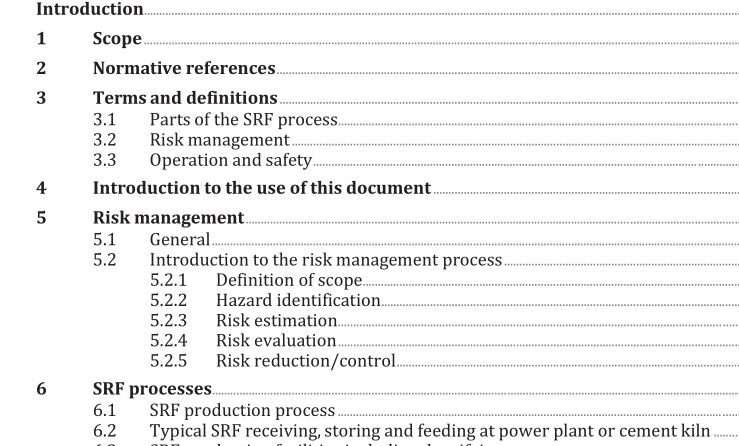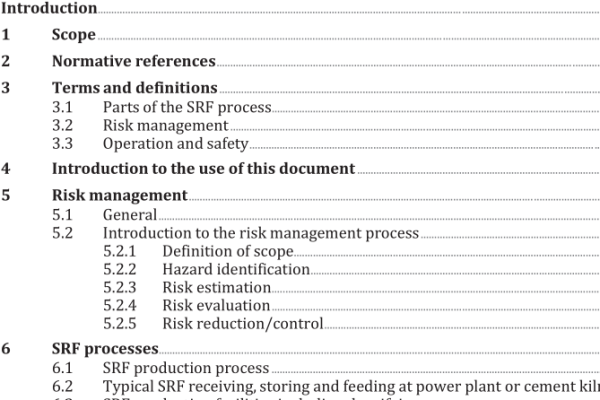ISO 21912:2021 pdf download – Solid recovered fuels — Safe handling and storage of solid recovered fuels.
3.5 forward oblique stroke / special character used to separate data elements in a data string Note 1 to entry: It is character value 47 in ISO 646. 3.6 in-service product/part product/part for which the original manufacturing process, including application of the identification symbology, has been completed and which is no longer an asset of the manufacturer or portion of the enterprise which owns the manufacturing process 3.7 limited marking space space available on the product/part which is insufficient for a machine-readable symbol and associated human translation representing the essential data for the conformance class (3.2) 3.8 optional data data which is not essential to provide a unique identifier for product/part identification or configuration management/control (part number), but provides supplementary information relative to the product/ part EXAMPLE Traceability data. 3.9 syntax set of rules defining the way in which data is put together with appropriate identifiers, delimiters, separator character(s), and other non-data characters to form messages Note 1 to entry: Syntax is equivalent to grammar in spoken language. 3.10 text element identifier TEI string of four characters (three upper-case alpha characters followed by a space character) that precedes a given data field and defines the data that follow 4 Product/part identification and traceability process 4.1 General provisions In order that automated processes can be used to identify and facilitate “cradle to grave ” traceability of products/parts, a product identification and traceability schema is defined in this document. The use of text element identifiers is the preferred semantic for use in this process. GS1 application identifiers or ASC MH10 data identifiers may be used with trading partner agreement. The standard data and formats described herein are structured to be compatible/interoperable with most types of machine-readable media and human translation. Standard data formats for the identification of both new and in-service products/parts are provided. The use of two conformance classes allows the product identification schema to be widely employed. The architecture of unique identification using a single data construct shall be referenced as defined in ISO/IEC 15459-3, ISO/IEC 15459-4, ISO/IEC 15459-6.
The applicable character set to be used for data encoding shall be the International Reference Version (IRV) of ISO/IEC 646. For direct part marking, Data Matrix (in accordance with ISO/IEC 16022) or QR Code (in accordance with ISO/IEC 18004) shall be used. Direct part marking is considered the most permanent of the machine-readable media techniques for providing life cycle identification of products/parts. NOTE Unless otherwise stated, this document uses the term “matrix symbol” to refer to both Data Matrix and QR Code symbols. For labelling or nameplates, either a matrix symbol, as above, or linear bar codes, namely Code 128 (in accordance with ISO/IEC 15417) or Code 39 (in accordance with ISO/IEC 16388) shall be used. This document makes provision for the use of RFID tags for the representation of both static and dynamic data in a tag affixed to the part, to enable additional operational processes to be performed.
ISO 21912:2021 pdf download – Solid recovered fuels — Safe handling and storage of solid recovered fuels






